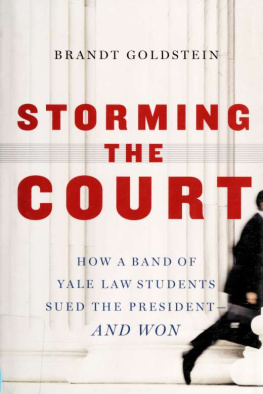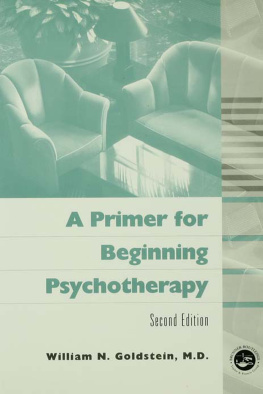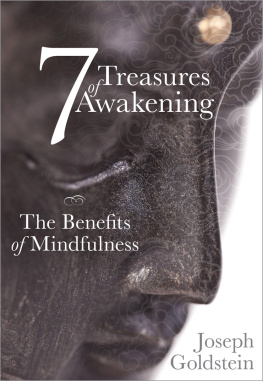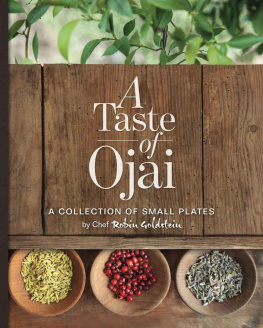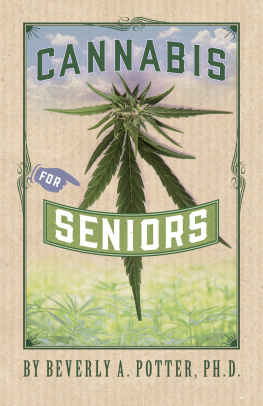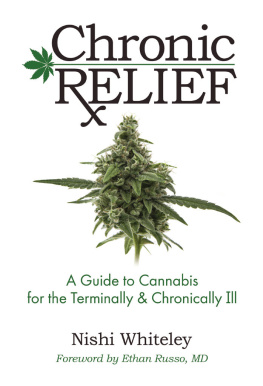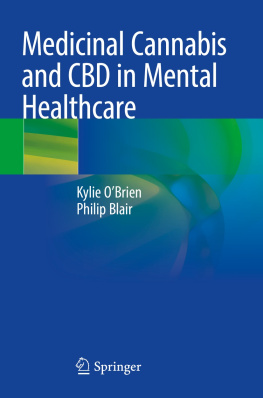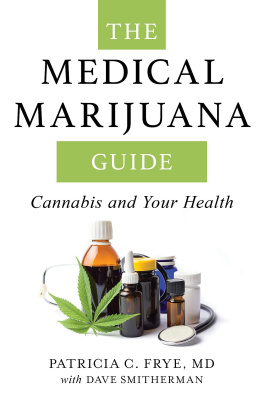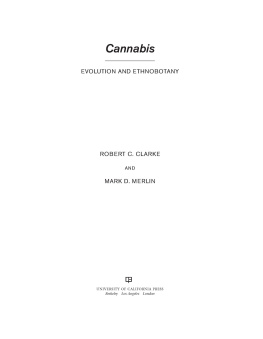Cannibis Revealed
How the worlds most misunderstood plant is healing everything from chronic pain to epilepsy
Bonni Goldstein, M.D.
Foreward by Ethan Russo, M.D.
Table of Contents
Foreword
It has now been 20 years since the landmark ballot initiative in the state of California that enabled patient access to cannabis for medical purposes. After litigation that was battled all the way to the 9th Circuit Court of Appeals (Conant vs. Walters), it was ruled that physicians had the right to discuss the pros and cons of cannabis, and even recommend its use to their patients. When the US Supreme Court declined to hear the case, its impact reverberated nation-wide. As is often the model with any social movement, California blazed a trail that became a model for other states and nations on this important issue. A majority of states now have legal access to cannabis for medical usage in some form. While cannabis remains an illegal, forbidden Schedule I substance under federal law, this state-by-state experiment is being allowed to play out, but this situation could change.
It is important to understand these developments in context. Cannabis, along with other herbal medicines, has been utilized by humans for healing purposes for millennia. It is only in the last 75 years that moral imperatives, but not science, have decreed its prohibition. Examining the issue in this light, cannabis has been the scapegoat of a historical aberration and one that may be reaching its conclusion after a long and costly War on Drugs both in financial respects and, more importantly, in terms of the human suffering that it has produced.
The battle is not over, however, despite the acceptance of the concept of cannabis as medicine by the overwhelming majority of the populace. Politicians are not yet fully on board with the concept and neither is the medical community, largely as the result of ignorance borne of a total lack of education on cannabis and the endocannabinoid system in medical schools. Each physician who is confronted by her first patient who asks the question, Would cannabis help? must decide whether to investigate the matter on her own, or merely let the question go unanswered, or be dismissed with some snarky remark that there is simply not enough information available with which to render a decision. As you will note in this book, Bonni Goldstein, MD was confronted with the same dilemma, but chose the path of educating herself so that she could best help her patients with their intractable medical problems. The results have been amazing and have produced remarkable benefits to those afflicted and their extended families. Many of us that work with such patients are constantly struck with the fact that it is only when an individual, a family member or close friend is touched by some dire medical need that finds relief in cannabis that hardened opinions against its use are softened or morphed into acceptance.
So, what is a patient or caregiver to do? Cannabis remains a subject where it is more likely than not that the patient will need to educate their doctor first. Such a task requires good tools, and I can think of few better than this book. It is affirming and refreshing to now possess a resource that presents the scientific facts on cannabis in such an accurate and accessible form. The reader will gain the knowledge necessary not only to understand cannabis and the endocannabinoid system, but also to make informed decisions on how to apply that knowledge to the treatment of myriad conditions where conventional medicine has all too frequently failed. We should be clear that cannabis is not miraculous. It may or may not help treat a given condition, but what is truly remarkable is how often it is of benefit, providing just enough relief so that a patient can properly cope with the challenges of their particular situation, and get on with life again as an active participant rather than a passive observer relegated to the sidelines. That is no small achievement.
I know Bonni as a gifted and compassionate healer and it pleases me greatly to know that her knowledge and experience can now be shared on a greater stage. Read, learn and enjoy!
Ethan Russo, MD
Authors Note
First do no harm.
I dont recall exactly when I learned my mother had suffered from seizures. I think I was in high school when my mother finally talked to me about her medical history and, while I always had intimations, I felt shocked to hear about it. When I look back on my childhood I see clues, despite her keeping it a secret from just about everyone.
My parents were homebodies and devoted to their children. My mother made dinner every night, my father came home from work and played with us outside, if the weather was nice, and both were always supportive of me. I was always smaller than my peers, got good grades and aimed to please. I was consistently told I was intelligent which I think made me want to achieve even more. I wasnt interested in being social: I basically did my own thing, happily reading voraciously. I first began dreaming of becoming a doctor when I was eight years old after watching the television show Emergency . I decided then that medicine was going to be my career and, ever earnest, I never once questioned or varied from the path that I had to take to get there.
My mother didnt drive when I was a little girl growing up in Brooklyn. Because there was an abundance of public transportation, it didnt seem that strange, and most of my friends mothers didnt drive either. When we moved to the suburbs in New Jersey, I noticed that my mother was the only one who didnt drive. We never talked about it, and eventually my mother did get her drivers license, but it was many years before I learned the real reason she hadnt for the early part of my childhood.
About the same time that I began dreaming about being a doctor, I also became aware that my mother took medications every night. Two big prescription bottles sat in the upper cabinet next to the kitchen sink and, whenever I asked about them, she gave a vague answer. I remember getting a sense that this wasnt something she wanted to talk about, so I stopped asking. A few years later, when I was a teenager, I was standing next to her by the kitchen cabinet where the medicine bottles were placed and asked her again about her medications, completely unaware of the story that she finally decided to share.
That day, she told me that when my sister was two years old and I just an infant, she had her first grand mal seizure in a Brooklyn playground and then two more seizures over the next few days. She eventually went to NYU to see a neurologist and while in his office she had another grand mal seizure. Hospitalized immediately, she, my father, grandmother and uncles were told that she might die. Diagnostic studies of the brain in the early 1960s were quite limited and the doctors did not know what was causing the seizures. Started on phenytoin (Dilantin) and phenobarbital, she responded positively and was told to continue taking them for the rest of her life.
My grandmother, an uneducated and superstitious immigrant, was in complete denial that my mother had epilepsy. She was terrified and embarrassed at the same time. Because of this, my parents became tight-lipped about what had happened. It just was not discussed or shared with anyone, and for most of my childhood I was unaware of her suffering.
I learned much later that even though the medications stopped her seizures, the side effects were difficult to tolerate. She became excessively hirsute and had significant lethargy and fatigue, making the care of two small children particularly challenging. She also had severe gingival hypertrophy, an overgrowth of gum tissue and a common side effect of phenytoin, which led to a lifetime of problems with her gums that still continues. I recall being in middle school and finding out that my mother had to have oral surgery for a terrible problem she was having with her gums. She stayed in bed for days with severe pain after the procedure. I can still see her there with ice on her swollen cheeks, black and blue, unable to talk or eat. Little did I know at the time that this was a result of her seizure medication.


